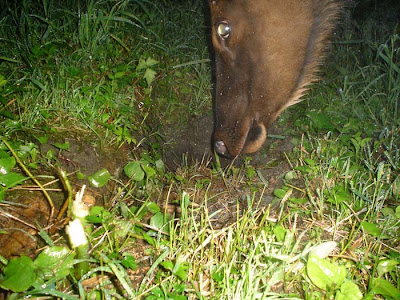
For some animals that are very difficult to photograph, like otter, I use a double camera setup. I will use a fast camera and hide it behind a tree so it can't be seen until the animal is almost in front of the camera. Then I place a camera in the open so it can be seen to keep the animals attention, as with this otter family. The last pup stopped to look at the camera as the mother and another pup continued walking. Otter are smart and if they choose can race through a camera and never get photographed. Sometimes I will leave the camera in the open turned off to not take a picture, this often gets more pictures as they check out the dummy camera.
This also works for bobcats and coyotes to keep them from looking into the camera and getting eye glare. They can't look at both cameras at once and at times both cameras will give good pictures, especially when using two different brands of cameras for trigger speed.











